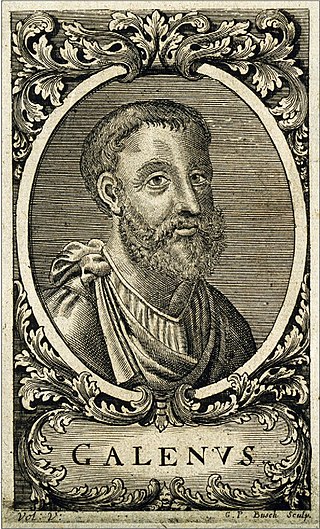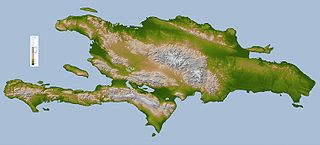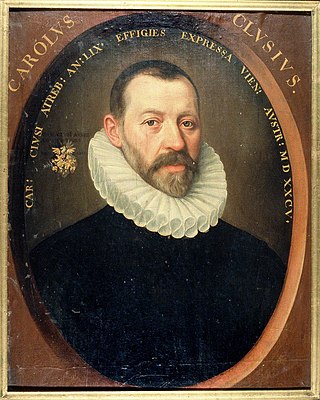Deaths
| | This section is empty. You can help by adding to it. (January 2012) |
| |||
|---|---|---|---|
| +... |
| 1518 in science |
|---|
| Fields |
| Technology |
| Social sciences |
| Paleontology |
| Extraterrestrial environment |
| Terrestrial environment |
| Other/related |
The year 1518 in science and technology included many events, some of which are listed here.
| | This section is empty. You can help by adding to it. (January 2012) |

Aelius Galenus or Claudius Galenus, often anglicized as Galen or Galen of Pergamon, was a Roman Greek physician, surgeon and philosopher. Considered to be one of the most accomplished of all medical researchers of antiquity, Galen influenced the development of various scientific disciplines, including anatomy, physiology, pathology, pharmacology, and neurology, as well as philosophy and logic.

Michel de Nostredame, usually Latinised as Nostradamus, was a French astrologer, apothecary, physician, and reputed seer, who is best known for his book Les Prophéties, a collection of 942 poetic quatrains allegedly predicting future events.

Year 1518 (MDXVIII) was a common year starting on Friday of the Julian calendar.

Claude Gaspar Bachet Sieur de Méziriac was a French mathematician and poet born in Bourg-en-Bresse, at that time belonging to Duchy of Savoy. He wrote Problèmes plaisans et délectables qui se font par les nombres, Les éléments arithmétiques, and a Latin translation of the Arithmetica of Diophantus. He also discovered means of solving indeterminate equations using continued fractions, a method of constructing magic squares, and a proof of Bézout's identity.

François Couperin was a French Baroque composer, organist and harpsichordist. He was known as Couperin le Grand to distinguish him from other members of the musically talented Couperin family.
The year 1837 in science and technology involved some significant events, listed below.

A plague doctor was a physician who treated victims of bubonic plague during epidemics mainly in the 16th and 17th centuries. These physicians were hired by cities to treat infected patients regardless of income, especially the poor that could not afford to pay.

Charles de l'Écluse,L'Escluse, or Carolus Clusius, seigneur de Watènes, was an Artois doctor and pioneering botanist, perhaps the most influential of all 16th-century scientific horticulturists.
The ideas of the Age of Enlightenment came to Spain in the 18th century with the new Bourbon dynasty, following the death of the last Habsburg monarch, Charles II, in 1700. The period of reform and 'enlightened despotism' under the eighteenth-century Bourbons focused on centralizing and modernizing the Spanish government, and improvement of infrastructure, beginning with the rule of King Charles III and the work of his minister, José Moñino, count of Floridablanca. In the political and economic sphere, the crown implemented a series of changes, collectively known as the Bourbon reforms, which were aimed at making the overseas empire more prosperous to the benefit of Spain.

Heliography from helios, meaning "sun", and graphein (γράφειν), "writing") is the photographic process invented, and named thus, by Joseph Nicéphore Niépce around 1822, which he used to make the earliest known surviving photograph from nature, View from the Window at Le Gras, and the first realisation of photoresist as means to reproduce artworks through inventions of photolithography and photogravure.
12 equal temperament (12-ET) is the musical system that divides the octave into 12 parts, all of which are equally tempered on a logarithmic scale, with a ratio equal to the 12th root of 2. That resulting smallest interval, 1⁄12 the width of an octave, is called a semitone or half step.
Henricus Grammateus was a German mathematician. He was born in Erfurt. In 1507 he started to study at the University of Vienna, where he subsequently taught. Christoph Rudolff was one of his students. From 1514 to 1517 he studied in Cracow and then returned to Vienna. But when the plague affected Vienna Schreiber left the city and went to Nuremberg.
Number systems have progressed from the use of fingers and tally marks, perhaps more than 40,000 years ago, to the use of sets of glyphs able to represent any conceivable number efficiently. The earliest known unambiguous notations for numbers emerged in Mesopotamia about 5000 or 6000 years ago.

Cristina García Rodero is a Spanish photographer and member of Magnum Photos and Agence Vu photo agencies.

The dancing plague of 1518, or dance epidemic of 1518, was a case of dancing mania that occurred in Strasbourg, Alsace, in the Holy Roman Empire from July 1518 to September 1518. Somewhere between 50 and 400 people took to dancing for weeks. There are many theories behind the phenomenon, the most popular being stress-induced mass hysteria, suggested by John Waller. Other theories include ergot and religious explanations. There is controversy concerning the number of deaths.

The Classification of Pharmaco-Therapeutic Referrals (CPR) is a taxonomy focused on defining and grouping together situations requiring a referral from pharmacists to physicians regarding the pharmacotherapy used by the patients. It has been published in 2008. It is bilingual: English/Spanish.
The year 1584 in science and technology included many events, some of which are listed here.
The Francisco Hernández expedition is considered to be the first scientific expedition to the New World, led by Francisco Hernández de Toledo, a naturalist and physician of the Court of King Philip II, who was highly regarded in Spain because of his works on herbal medicine.

Sex education in Francoist Spain (1939–1975) and the democratic transition (1975–1982) was prohibited by law to be taught in schools. When it was addressed, it was originally done so from a moralistic point of view, highlighting concepts like the need for chastity. During the mid-1950s, this practice began to change, and after formal government approval sex education incorporated more elements of psychology and biology. Despite a lack of government-sanctioned sex education, people were taught informally. Middle-class women could learn from marriage guides. More generally, as women approached the age to marry, they received more sexual education from friends, mothers, sisters, and future in-laws. Upper-class men learned by having sex with prostitutes and maids employed by their households.